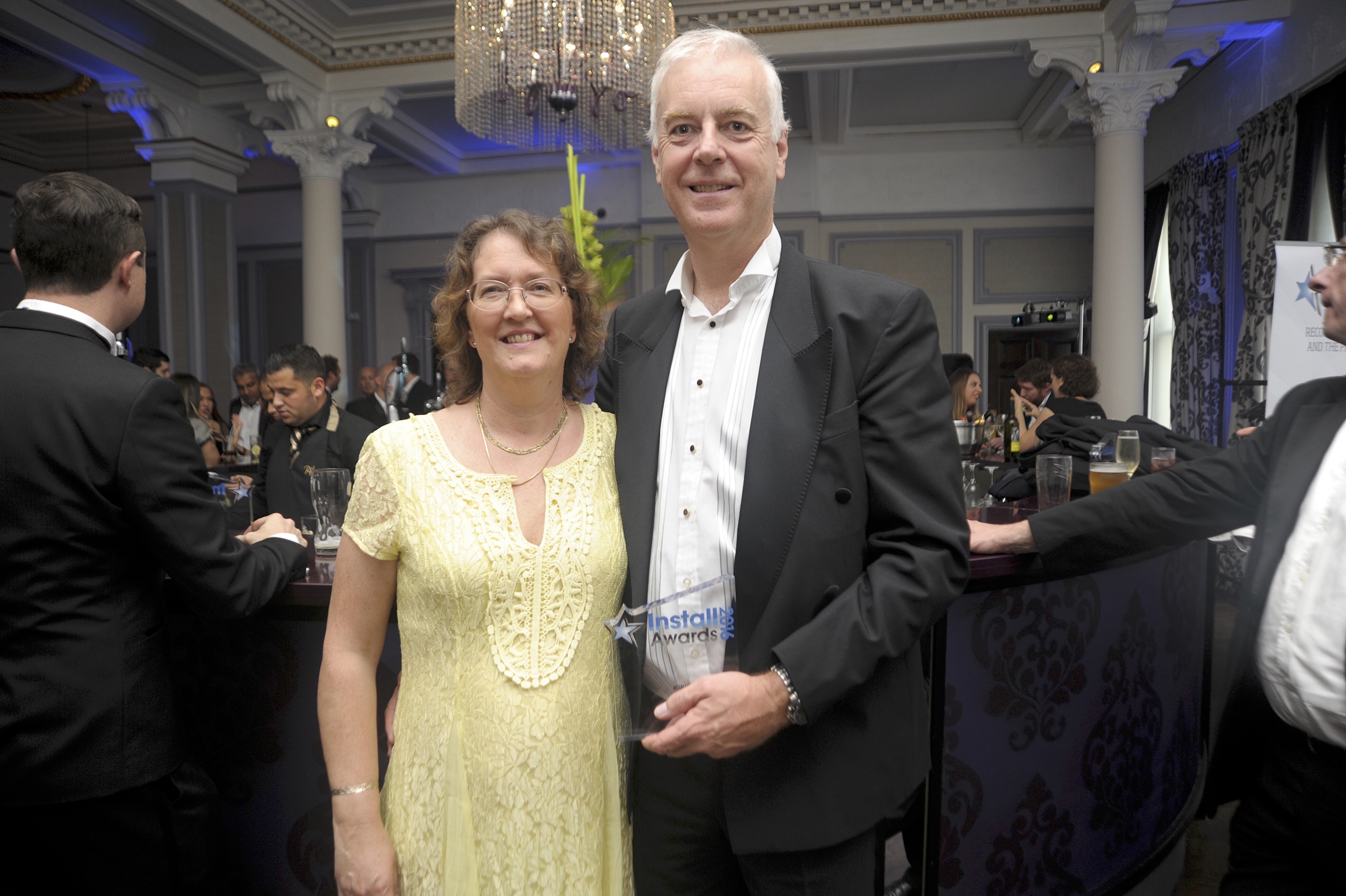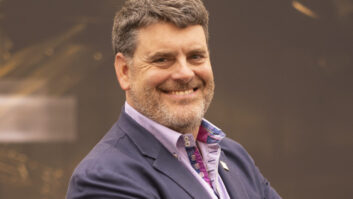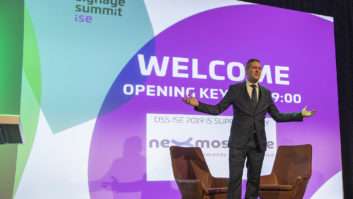
David Willrich founded his eponymous company 30 years ago. Fresh from his induction into the Installation Hall of Fame at the InstallAwards, he reflects with Paddy Baker on a career spent in museums and visitor attractions
The National Motor Museum in Beaulieu, Hampshire has played a central role in David Willrich’s career in AV. He joined the staff there as a technician straight out of sixth-form college, looking after “120 projectors and all that went with them”. He explains: “In those days Beaulieu hosted seminars for the independent museum world, and a lot of the people who came looked in awe at the scale of our AV and the fact that it was all working. They joked: ’Will you come and sort ours out for us?’”
But the jokes became a reality, and when the requests became more than Willrich could handle in his spare time and holidays, he decided to go freelance. He started his company – DJ Willrich Ltd – in 1986, retaining the Motor Museum as a client. “We were allowed to carry on trading out of the workshop we had, but we bought all the tools and the resources we were using.” Thirty years and two office moves later – but still on the Beaulieu estate – DJW is still looking after the Motor Museum. The arrangement originally went beyond AV – taking in early word processors, turnstiles, light bulb changing, 110V slot cars, radio controlled cars and other electronic technology, but is limited to AV and entertainment technology today.
The leisure market has traditionally been a cyclic one, he says. In the early days, there would often be an end-of-year spending bonanza, as venues, particularly public authority-owned museums, looked to use up their budget, which made for a busy first quarter for DJW. Easter and the Spring Bank Holiday were key project deadlines, and from the latter weekend to the August Bank Holiday “literally all our work was maintenance, particularly of slide projectors and LaserDisc players”. The bulk of September and October was spent visiting potential new projects “as they knew how much money they’d made and what they wanted to spend before the next Spring Bank Holiday. You can imagine what that was like in terms of cashflow – huge swings in the first six months, much smaller the rest of the year, when you could still be living on money you made earlier.”
At one point, he says, there was an incentive to even things out by going after boardroom installation work – “but being based out here in the forest, you’re at an immediate commercial disadvantage compared to companies based in London, so that wasn’t a market that was sensible to attack. We did some provincial boardrooms at that time. But you have to gear yourself to your market, and we’ve always been geared to museums and attractions – that’s the skill base of everybody in the company. So over the years it’s made far more sense to stick with that, and ride the rollercoaster.”
Since the late 1990s, the advent of National Lottery funding in the UK has helped to smooth out cashflow, he says, because that organisation works to its own timescale when it comes to allocating and releasing finance – “so that has evened out the project flow an awful lot, and done us quite a few favours”.
Millennium madness
Particularly when cashflow is up and down, it must be difficult to ensure steady growth in a company, I suggest. Were there ever times when he bit off more than he could chew?
“The market was just crazy over the Millennium – it was the biggest volume of work we’d ever done. We had four zones in the Millennium Dome and a number of other Millennium projects – and the AV industry as a whole in this sector lacked capacity, so anybody in this market was beyond maxed out. At one point we would spend three days on one site and four days on another trying to keep two clients happy and keep two projects moving in parallel.”
Looking back over his career, which technology development does he think had the greatest effect on the leisure sector? He chooses digital projectors – “when they finally got it right”. Early LCD projectors were “a disaster – that hurt the market because a lot of organisations spent money on projectors and they just weren’t up to it; in a lot of attractions they didn’t even last 12 months.
“The thing now,” he continues, ”is having good quality and reliable projectors.” Having to change lamps two or three times a year, and the associated cost of ownership, used to make some venues reluctant to install projectors, he recalls: “Now designers and museums are more confident about projectors and can create large display areas with dynamic graphics instead of static panels. Media servers have supported this trend, but it’s been projector-led.”
Projectors have had a major impact in theme parks, particularly dark rides, he says. “Park owners like Disney and Universal could afford to use big film projection rigs – they’re now converting them over to digital projection, but obviously that scales down in size and cost, and comes into the realm of smaller parks and attractions, and of course museums. And it all helps to produce more dynamic and interesting displays.”
Industry association
Willrich has been strongly involved in the TEA (Themed Entertainment Association), which celebrates its 25th anniversary next year. TEA represents the supply side of the industry – “designers, architects, consultants, down to theming companies, scenic painters, AV companies and show control programmers”. The organisation has grown from 20 or 30 companies at its inception to around 1500 members (companies or individuals) today, he says. It has four divisions across the world, each of which organises events during the year.
He has previously served as president of the Europe and Middle East division of the TEA, and this November, he will become overall president for a two-year term. One thorny issue he wants to address during his presidency is contracts. “They are still an issue for audiovisual companies throughout the whole AV industry, not just themed entertainment. We invariably get builders’ contracts thrown at us – and we’re expected to sign up to a contract that isn’t 100% relevant to what we do. And that can also reflect in payment terms, which can be very onerous and not relevant to the way we have to work within AV.” Other companies within TEA, such as theming companies, have exactly the same issues, he says: “We are not a construction industry, but because the prime contractor is generally a construction company, they want everything to work their way with construction-type contracts.
“I really would like to get to a point where we see associations of all sorts trying to make a stand and say, ‘This isn’t the best way of working – it’s not in the best interests of anyone other than the general contractor.’ The sad fact is that the majority of companies that go under do so because of cashflow, not because they’re no good. It’s because they’ve done their level best to try and work to a contract that’s working against them; and if you get two or three of those together they can compound and drive you under.”
The next generation
Are we as an industry doing enough to recruit and develop young talent, I ask? His main involvement here has been with a TEA programme called ‘Next Gen’, which has had its main successes in the US. “We’ve made major moves to get closer to universities with specialist courses targeting the world of themed entertainment – not just design, but all aspects. We’re making sure that the way they see the industry is the way the industry is.” TEA’s SATE (Storytelling, Architecture, Technology, Experience) conference is usually hosted by a university, “and we’ve found that to be a really good mix because you’re getting company owners and senior management from the industry giving presentations that the students are exposed to. It’s amazing how many have got internships through that conference alone, and jobs through the Next Gen programme in general.”
Turning to the AV industry in general, he says: “There are definitely issues in the way technology is taught – it’s taught in a very general way, and in the past was biased towards more major employers. But the AV industry is now a fairly major employer, but it’s being left to InfoComm to train people in the way industry needs rather than the colleges taking a look at it. There’s definitely a gap between colleges’ perception of the AV industry and what it is in reality, but how we plug that I don’t know. I don’t have enough hours in the day to get involved in any more associations!
“The big shame is that you get kids going through schools, sixth-form colleges and all the higher education offers, not knowing that some of these things exist. They are exactly what they’re looking for, but sometimes they don’t find them until they’re in their late twenties or early thirties. There’s certainly a lack of understanding of our branch of audiovisual and the themed entertainment industry as a whole in colleges and universities – and it’s becoming a bigger and bigger employer.”







